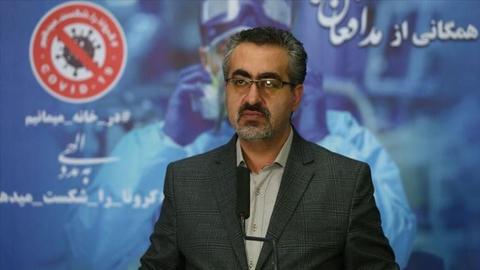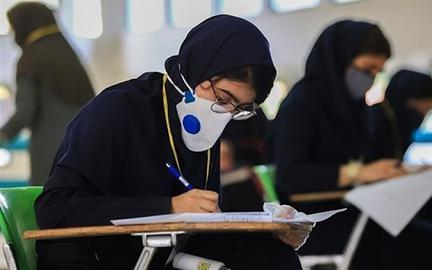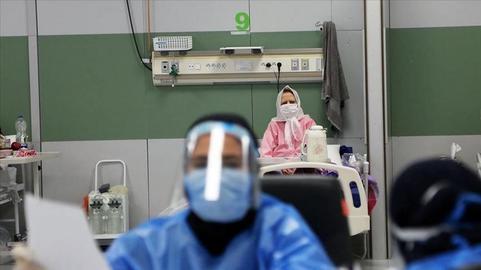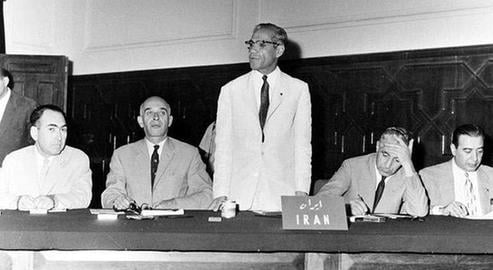For almost a week, the health ministry’s spokesperson Dr Sima Sadat Lari has claimed that 15 out of 31 Iranian provinces are classified as “red,” the highest Covid-19 alert level. But on July 26, Kianoush Jahanpour, the head of the health ministry’s public relations office, confirmed that 25 provinces are on emergency alert. The number was also confirmed by IranWire’s own review of individual provinces’ announcements of coronavirus hospitalizations.
As with many Islamic Republic officials, Jahanpour — who had previously held the job of spokesperson for the ministry — blamed the crisis exclusively on ordinary people, who he chastised for believing that the situation had returned to normal. Some officials also singled out doctors’ offices for their refusal to adhere to safety guidelines, despite the obvious fact that social distancing is often impossible in a doctor-patient consultation.
At the same time, many governors and key officials continued to make plans for the upcoming ceremonies marking the martyrdom of Imam Hossein.
Officials have also so far refused to cancel nationwide university entrance exams. According to Mohammad Vahidi, deputy chairman of parliament’s Education and Research Committee, the exams will take place as scheduled. However, parliament is obliged to follow the decisions of the National Coronavirus Taskforce. “This year,” he said, “all decisions about gatherings, ceremonies and even the reopening of the mosques lie with the National Coronavirus Taskforce, and this includes the university entrance exams.”
Kianoush Jahanpour announced that the country was now in the middle of the “second chapter” of the pandemic. He added that the crisis in the province of Razavi Khorasan, the focal point for Shia pilgrims in Iran, is the most severe among the 25 provinces on emergency alert.
According to the health ministry’s Epidemiology Committee, the rate of coronavirus infections and fatalities in Iran remains relatively high. In the last three weeks, says the committee’s report, the epidemic has been somewhat stable in Lorestan province, with small and uneven variations; and it has slightly dipped in Khuzestan. However, it has peaked or is currently peaking in the nine provinces of East Azerbaijan, North Khorasan, Mazandaran, Razavi Khorasan, Kerman, Qazvin, Golestan, Qom and Tehran. The six provinces of Zanjan, Ilam, West Azerbaijan, Isfahan, Kohgiluyeh and Boyer Ahmad and Markazi have recently gone through a peak of the pandemic. Due to the inconsistency in data, the report could not provide a reliable analysis of 14 other provinces.
Provinces Round-up
In the province of Razavi Khorasan, 19 cities are red, six are orange, two are yellow and four are white, according to Hassan Jafari, the province’s deputy governor. He said at the peak of the first wave of coronavirus in the province on April 17 the number of hospitalizations and fatalities was high, but “unfortunately, at the peak of the second wave on July 19 we witnessed a high number of hospitalizations and fatalities as well.” According to the latest figures, he said, 76 percent of the province's population were wearing masks.
In East Azerbaijan, 80 percent of hospital beds for coronavirus patients are full and 803 people are currently hospitalized, with about 120 in a critical condition and requiring ventilators to help them breathe, said Dr. Mohammad Hossein Sumi, president of Tabriz University of Medical Sciences. An official from Tabriz Imam Reza Teaching and Treatment Center reported that approximately 160 coronavirus patients were hospitalized there, and out of that number, 80 are in the intensive care unit (ICU) and 60 of them were breathing with the aid of ventilators.
Levels of coronavirus cases in Bushehr, officially an “orange” province, have stabilized over the last week, said Abdolkarim Gravand, the governor of Bushehr. But he warned that the situation is fragile and the province will again witness a rise in infections if health protocols are ignored. To prevent this, he said, restrictions in the province will be extended for another week. However, he appeared to undermine this policy by discussing the upcoming mourning ceremonies marking the martyrdom of Imam Hossein, which are due to be held indoors in Bushehr province. Gravand said a working group had been set up to analyze the situation and suggest ways that the ceremonies could be held safely.
In June, the number of coronavirus cases in Ilam province rose 3.3 times and the number of fatalities increased 1.2 times compared with the numbers recorded at the beginning of the outbreak, said Ghasem Soleimani Dashtaki, governor of the province. He said people must continue to avoid crowds, travel, holding gatherings in parks or other public spaces, and attending wedding and mourning ceremonies. But, as with Bushehr’s governor, he said forthcoming ceremonies to mourn the martyrdom of Imam Hossein will be held according to a strict schedule and in line with health and safety protocols.
At the same time, the National Coronavirus Taskforce, which continues to make some of the country’s most important decisions, denied a request for one-third of government employees in Ilam to work remotely, despite data indicating that more than two-thirds of all coronavirus fatalities in the province have occurred over the last month.
On July 25, Senior Deputy Health Minister Iraj Harirchi claimed that doctors’ offices were failing to comply with health protocols, stating that only 10 percent of these public offices were adhering to guidelines. This was the lowest compliance level among public spaces and amenities, he said. But on July 26, Dr. Mohammad Reza Zafarghandi, head of Iran’s Medical Council, wrote to the health ministry criticizing such comparisons and dismissing them as invalid and unscientific. He said that, among other things, the high number of patients and the fact that some are disabled makes social distancing impossible. Doctors cannot refuse to see or examine patients, he said.
Coronavirus infections in Mazandaran are still rising and on July 26 it was announced that another member of the province’s medical staff lost their life to Covid-19, the tenth death among medical professionals in the province. During the same time, 251 new coronavirus patients were hospitalized in Mazandaran, bringing the total of hospitalizations in the province to 1,939.
The number of coronavirus patients admitted to Tehran’s Tajrish Martyrs Hospital exceeds the number of those released, said Dr. Reza Jalili Khoshnood, the hospital’s president. He reported that, as of July 26, close to 200 members of the hospital’s medical staff had been infected with coronavirus, some for the second time. The hospital has 410 beds and, according to Dr. Khoshnood, about 200 of these beds have been allocated to Covid-19 patients.
Restrictions on travel to villages and on certain categories of jobs, which were imposed in Hormozgan at the beginning of July, were extended for another week, announced Fereydoon Hemmati, Hormozgan’s governor. Mosques and prayer halls remain closed, he said, and social, religious, cultural, wedding and mourning ceremonies are banned.
The number of coronavirus cases in Isfahan is increasing and the number of cases in Tehran province has doubled over the past month, Dr. Sima Sadat Lari, the health ministry’s spokeswoman, reported. She said nine cities in Tehran province are in the “orange” state or a state of high alert, and that the pace of the increase in the cities of Tehran, Pakdasht, Damavand and Shahriar is relatively fast. Currently, she said, half of the beds designated for adults in Tehran’s hospitals are now occupied by coronavirus patients.
She continued to categorize Tehran province as an “orange” area. But according to the health ministry’s own criteria and figures, Tehran has been “red” for close to two weeks.
As in recent days, she said, the provinces of Lorestan, Alborz, East Azerbaijan, West Azerbaijan, Ilam, Razavi Khorasan, Khuzestan, Zanjan, Golestan, Mazandaran, Kerman and Fars are “red,” and the provinces of Tehran, Isfahan, Bushehr, Hormozgan, Qazvin, Markazi, North Khorasan, South Khorasan, Semnan, Ardebil, Sistan and Baluchistan, Kohgiluyeh and Boyer Ahmad and Hamedan are in an “orange” state.
But, as been the case for several days, if not weeks, the spokesperson’s statements contradict other information provided by provincial officials and universities of medical sciences. These sources assert that the provinces of Tehran, South Khorasan, Sistan and Baluchistan, Qazvin, Ardebil, Hamedan, Bushehr, Hormozgan, Isfahan and Markazi are not “orange” but actually “red,” and the provinces of Kurdistan, Kermanshah, Qom, and Yazd are also classified as “orange.”
In her daily briefing, Dr. Sadat Lari also announced the official coronavirus statistics for the 24 hours ending at midday, Saturday, July 25:
- New coronavirus cases: 2,333
- New hospitalizations: 1,282
- Total cases since the outbreak: 291,172
- Total coronavirus tests conducted in Iran: 2,327,850
- Total recovered from coronavirus: 253,213
- New fatalities: 216
- Total death toll since the outbreak: 15,700
This is part of IranWire's coronavirus chronology. Read the full chronology
visit the accountability section
In this section of Iran Wire, you can contact the officials and launch your campaign for various problems




























comments